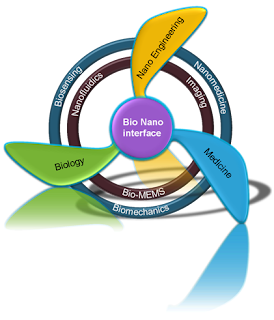developing a nano bio model system for rational design in nanomedicine
Developing a nano bio model system for rational design in nanomedicine
 |
| developing a nano bio model system for rational design in nanomedicine |
developing a nano bio model system for rational design in nanomedicine
Based on the above discussion, one would expect that an ideal model system for interrogating the cell- nanostructure interactions should meet three criteria: 1 an intensive and intrinsic signal that allows real- time visualization of single nanostructures with 3D submicron spatial resolution; 2 a surface capable of being modified in a mild condition to produce a controlled density of ligands or charges; 3 precise control of size as well as shape, that is aspect ratio for a rod shape, through fabrication or synthesis. Here, we introduce a newly developed excellent nano- bio model system based on functionalized silicon NW (SiNW) for study of the cellular response to 1D nanostructures. Our studies suggest that SiNW demonstrate three unique features meeting the criteria discussed above, including unparalleled dimension- control properties, intensive intrinsic NLO signals for imaging and flexible surface chemistry. The precise control of dimensions and aspect ratios of SiNW can be achieved through a metal nanocluster catalyzed chemical vapor deposition (CVD) method . In this chemical approach, monodisperse gold NP are used as the catalyst to control the diameter of SiNW.
developing a nano bio model system for rational design in nanomedicine
Growth pressure and growth time are optimized to produce SiNW with desirable lengths ranging from a few hundred nanometers to tens of micrometers. We also discovered strong and stable third- order non- linear optical (NLO) signals (including four- wave mixing (FWM) and third- harmonic generation (THG) from SiNW, which, associated with deep penetration enabled by near- infrared or infrared pump beams and high 3D spatial resolution, can be used for both in vivo applications and label- free and noninvasive detection of the NW in biological experiments in real time. Additionally, SiNW with a native oxide layer on the surface can be easily functionalized based on well- studied silica surface chemistry. Collectively, we demonstrate that functionalized single crystalline SiNW can be employed to interrogate how a 1Dnanostructure interacts with cells in vivo and in vitro .
Comments
Post a Comment